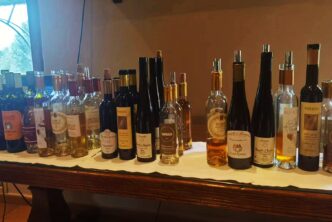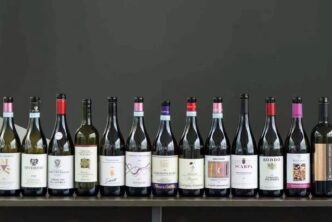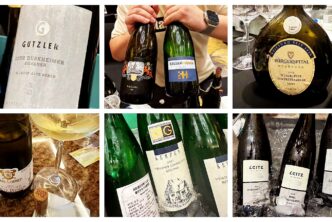I love all wines, be they made with the ubiquitous Cabernet Sauvignon and Chardonnay grapes or with less well-known Isabella, Tibouren and Nasco. It’s all fair game in the end: but clearly, that statement applies only if and when such wines are well-made (ie. devoid of flaws). All wines are even more significant when they have a story to tell. This is exactly the case of one of the worlds prettiest white grapes, Valle d’Aosta’s Prié Blanc and its lovely Blanc de Morgex et La Salle wine.

Prié Blanc grows only in Italy’s bucolic Valle d’Aosta, an alpine region that is the smallest of the country’s official twenty regions, tucked away in the northwestern corner of the boot, sharing borders with France and Switzerland. Actually, the official name of the grape is Prié only, given that this grape is the original, one and only, Prié; another “Prié” grape exists, the red-berried Prié Rouge, a name that was once used to identify Prëmetta, a distinct wine grape variety that also grows in the Valle d’Aosta, and only there. However, the Prié Rouge monicker is hardly used anymore, as the variety is much better known by everyone nowadays by the Prëmetta name, which, if nothing else, helps avoid confusion with the original, authentic, Prié.
Blanc de Morgex et La Salle a light to medium-bodied white wine that speaks of its origins, given that the name refers to the two small hamlets where this variety grows best: Morgex and La Salle. This alpine environment Prié Blanc calls home is perfect for it, as the grape is a bit of a hermit that likes to live at almost impossible altitudes [almost always around 700-900 meters above sea level (asl), but in fact there are quite a few vineyards at more than 1000 meters asl too] as it thrives in cool weather. However, even though Prié Blanc is quite comfy at nose-bleed heights, farmers can’t get too carried away: planting it too high up in the Valle d’Aosta poses noteworthy risks and this for two reasons especially. First, because the amount of sand content in the soil in the region increases as you move up in altitude, and as the vineyards are not irrigated, drought can be a serious problem in what is a climatically dry terroir; second, because of the Valle’s open topographical conformation that makes the likelihood of adverse weather effects more likely the higher you climb. Life isn’t really a box of chocolates, after all.
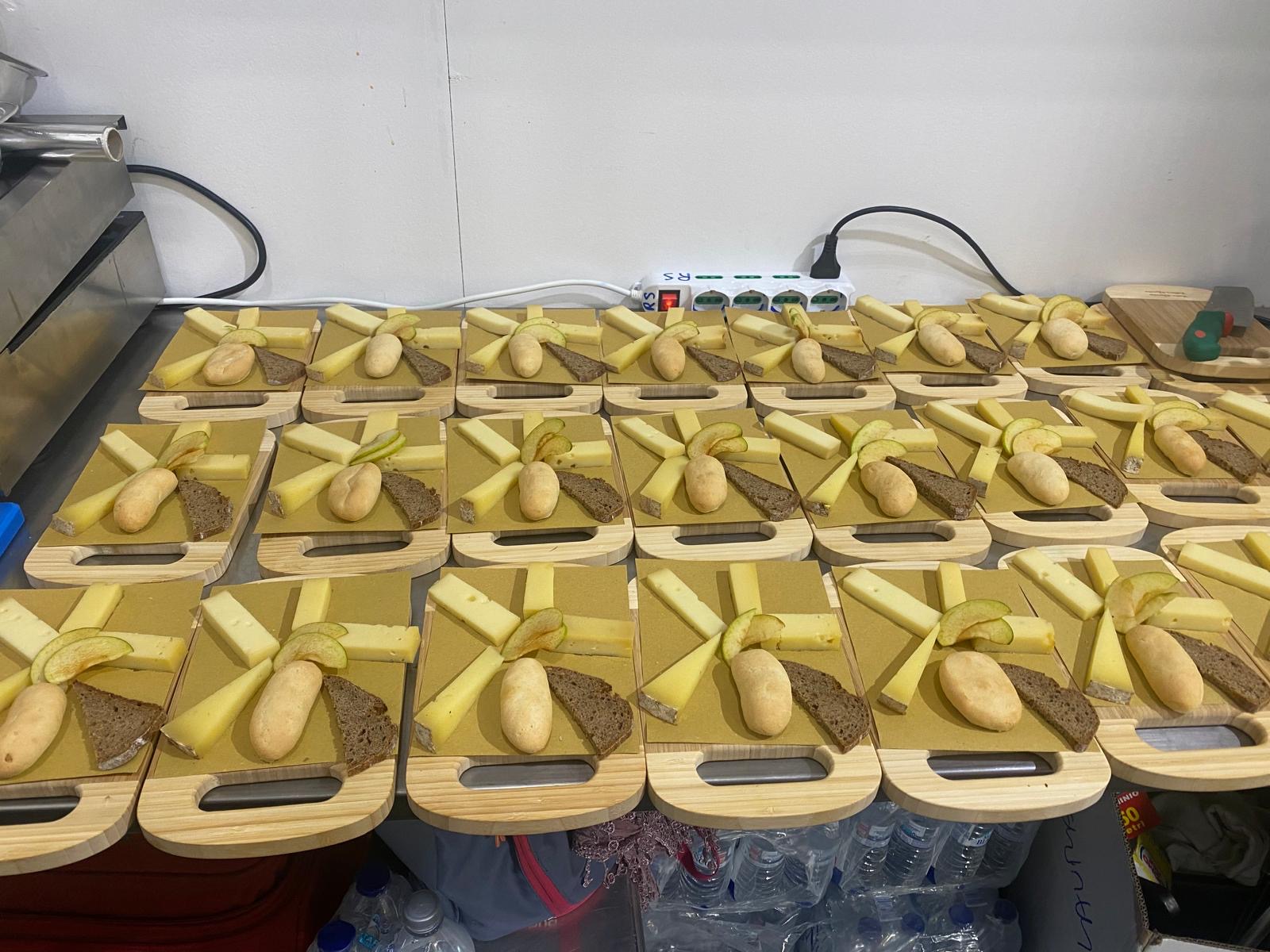
Prié grapes are marked by high acidity, such that the grape proves remarkably suited to making not just refreshing still white wines, but also sparkling wines (both by the Charmat-Martinotti tank method and by classic method of secondary fermentation taking place in the bottle in the manner of Champagne) and sweet wines. The sweet wines are identified as flétri on bottle labels (a word derived from the local language that refers to air-dried grapes) and these wines can be excellent. In fact, Prié is also used to make one of Italy’s very rare Icewines, a vintage of which is described in this report (though it is not “just” an Icewine, as we shall see). For more in-depth information on this grape variety and wine, I refer you to my previous, longer and more detailed, article written for the TerroirSense Wine Review: The Marvelous Prié Blanc and Its Blanc de Morgex et La Salle Wines (Plus One Surprise!) published back on November 8, 2023.
The wines in this tasting
All the wines in this report were tasted in the course of a masterclass led by me and Nicolas Bovard, the young, passionate and talented president of the Cave Mont Blanc de Morgex et La Salle (and and also a major force in promoting the wines and activities of the local producer association) at the 2024 Vinitaly fair in Verona on Monday April 15, in pavillon 12 stand A3, where a small but packed tasting room served us well. At the end of the tasting a highly informative session was led by Diego Bovard (father of Nicolas) on Valle d’Aosta’s DOP gastronomic specialties, including three types of Fontina (the cheese pride of the Valle in the latteria, alpeggio and long aged versions), the toma di Gressoney (another delicious local cheese) and bodeun (local salume).
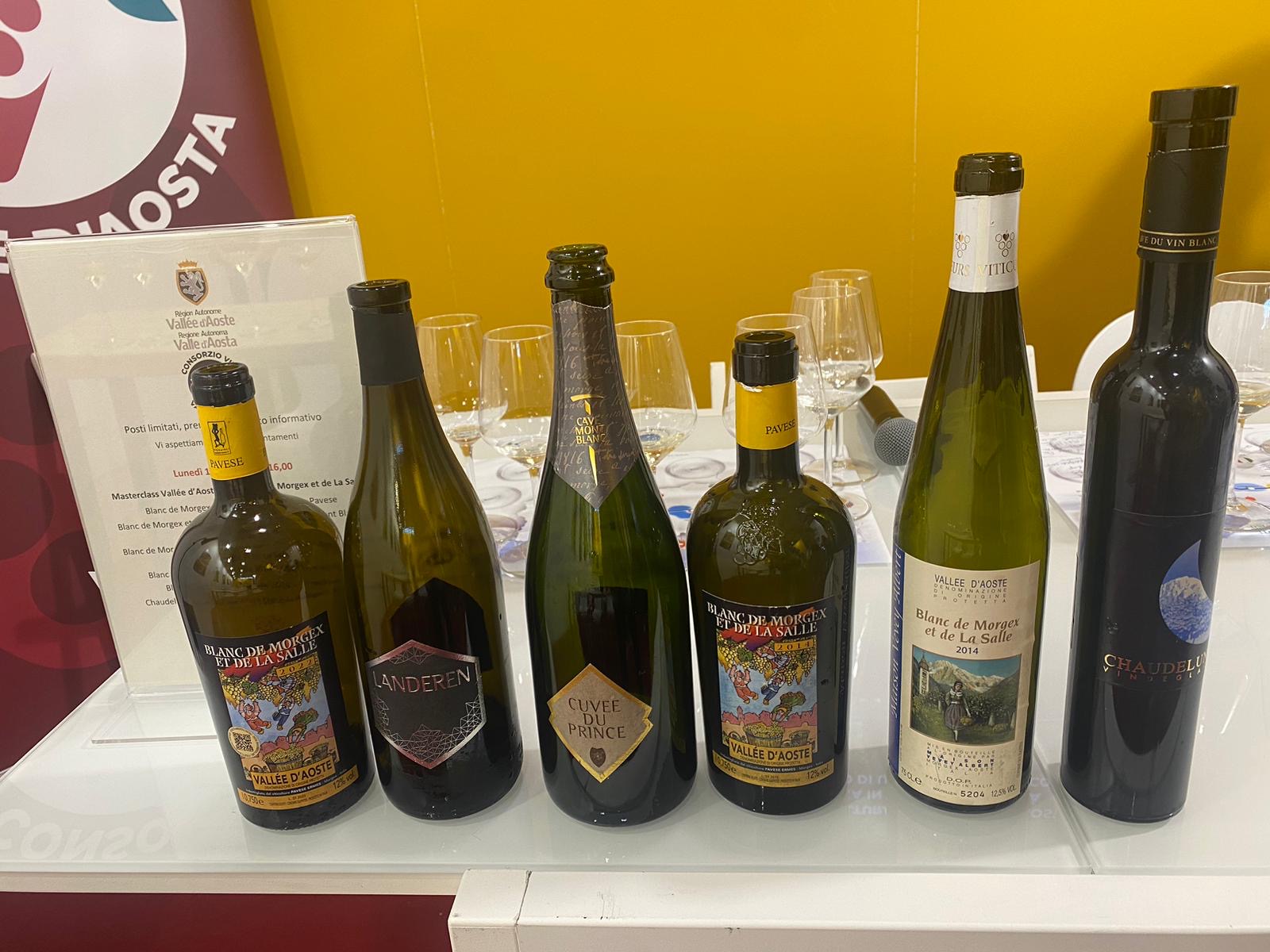
Pavese 2022 Blanc de Morgex et La Salle 93
Luminous straw-green. Very pretty aromas of buttercups, lime and minerals. Then fresh and savoury, with hints of lime and thyme in the mouth and plenty of juicy acidity to extend the flavours on the long juicy finish. Drinking window: 2024-2025.
Cave Mont Blanc 2017 Blanc de Morgex et La Salle Landeren 93
Vivid straw green. Piercing aromas and flavours of stone fruit, green apple, lime and white flowers. Then juicy and clean in the mouth, with a noteworthy precision to its white fruit and floral flavours. An undercurrent of minerality adds interest on the long back end. Landeren is a a wine made in what was perhaps the single worse growing season in history; and if not the absolute worst, then certainly in the top five of all time. Because of unprecedented frost episodes that hit the region for two days duration, growers lost 80-100% of their crop, resulting in very little wine being made that year. For example, at Cave Mont Blanc Morgex et La Salle they normally make 130,000 bottles of various Blanc de Morgex wines a year, but in 2017 the volume was only 2,300 bottles, this wine I am telling you about here. This is why the Landeren wine is called so: its name is an adaptation of the French “l’an de rien” meaning the “year of nothing” as in essentially “nothing was produced”. In other words, it’s a one-time wine that clearly anyone who loves Valle d’Aosta and its wines hopes to never seen again; but as I wrote above, given that horrific, sad story, the wine has turned out remarkably good. So congratulations to everyone are in order. Drinking window: 2024-2027.
Cave Mont Blanc 2013 Blanc de Morgex et La Salle Spumante 94
Medium golden-tinged straw colour with a steady stream of small bubbles. Peony, jasmine, iris and wildflowers on the nicely scented nose; with aeration, ripe and sweet notes of nectarine and white peach emerge, complicated by hints of thyme. At once creamy and steely, with noteworthy precision to the flavours of tangerine, white peach, green apple and mountain herbs. This finishes long and nuanced, with sneaky concentration and depth. Drinking window: 2024-2029.
Albert Vevey 2014 Blanc de Morgex et La Salle 94
Vibrant straw-yellow with some green. Translucent mineral and peachy goodness dominate on the nose and in the mouth, with complicating hints of chamomile and minty herbs. A whiplash of harmonious, juicy acidity carries the orchard fruit flavours on the long, floral and mineral close. Super nice white wine that’s delicious to drink and that in no way hints it is ten years old. Actually, in a good cellar, this will last and still be enjoyable for another five years easily. Drinking window: 2024-2029.
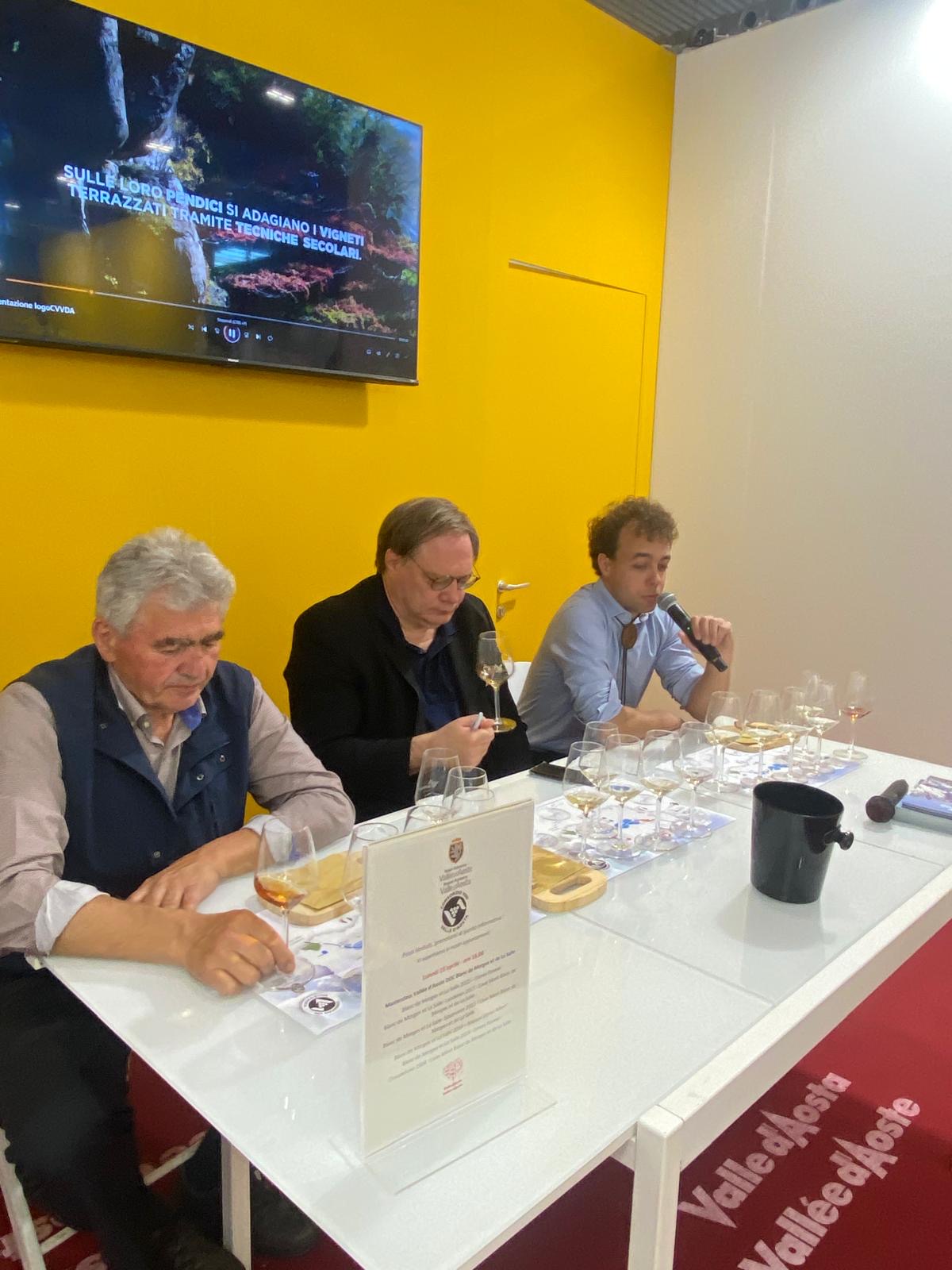
Pavese 2014 Blanc de Morgex et La Salle 93
Good full straw yellow. Bigger, denser and riper than the Albert Vevey 2014, but with its own charm, offering pure minty herb and fruit aromas and flavours. Showcases building flavour intensity on the rising, herb- and jasmine-accented back end. Another example of just how well Blanc de Morgex et La Salle ages. Drinking window: 2024-2027.
Cave Mont Blanc 2004 Chaudelune Blanc de Morgex et La Salle 95
This is superb. Bright golden-tinged straw yellow. Yellow and white peach, banana cream pie, lime, lemon curd, tangerine jelly, chamomile, thyme and rosemary on the complex, deep nose. Then exceptionally suave and layered, with truly complex flavours of white peach, orange nectar, tangerine jelly and minty herbs on the long slightly oxidative finish. Drop-dead gorgeous wine boasting marvellous sugar-acid balance that at twenty years of age is still remarkably pure and is so light and lively that it leaves an impression of being capable to stand up not just to desserts but to aged cheeses, scallop and shrimp dishes. Chaudelune is an absolutely unique Italian wine: made by a combination of icewine and oxidative winemaking production techniques, it is literally like nothing else made in the country. Drinking window: 2024-2029.
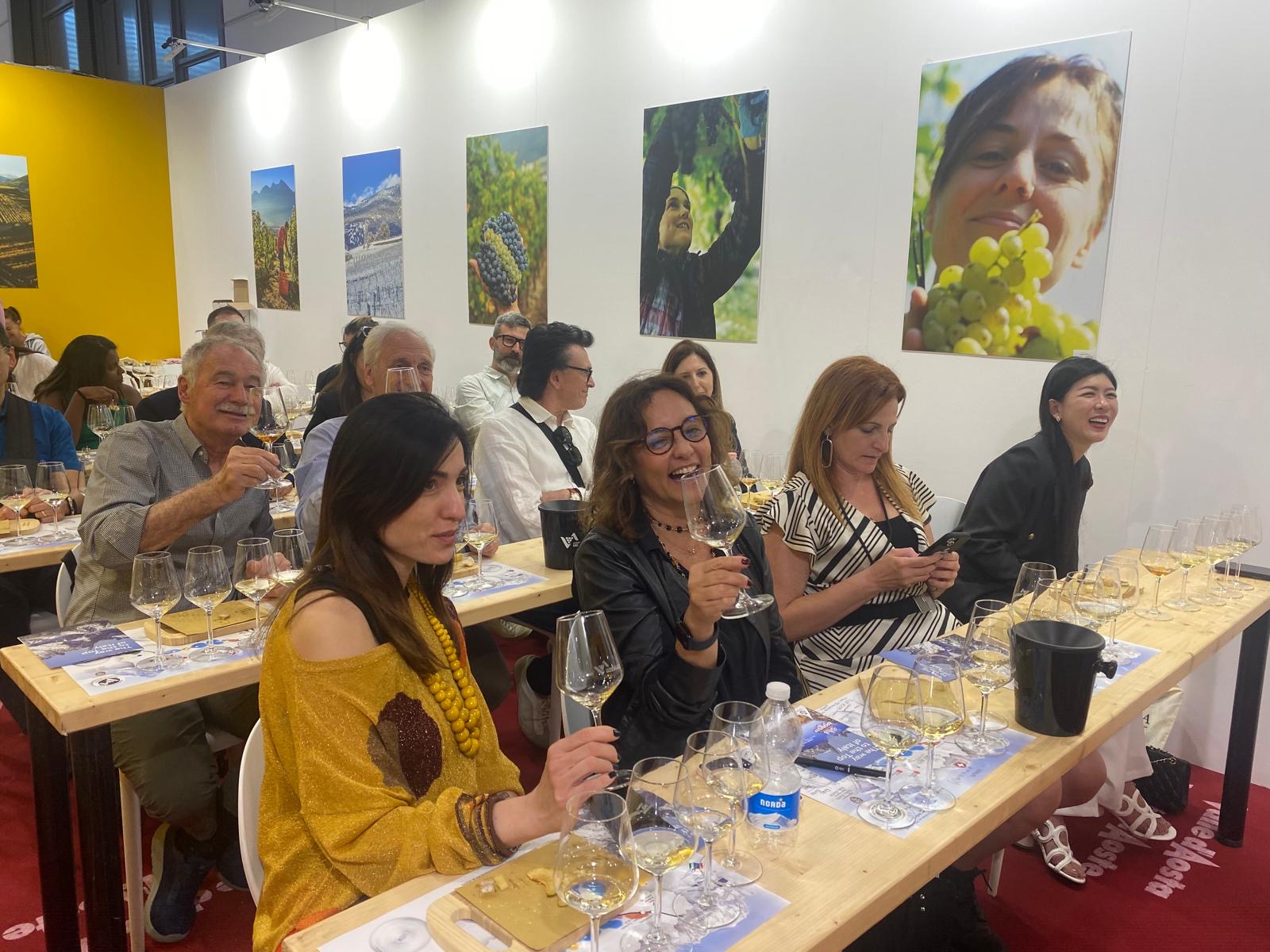

 中文
中文

